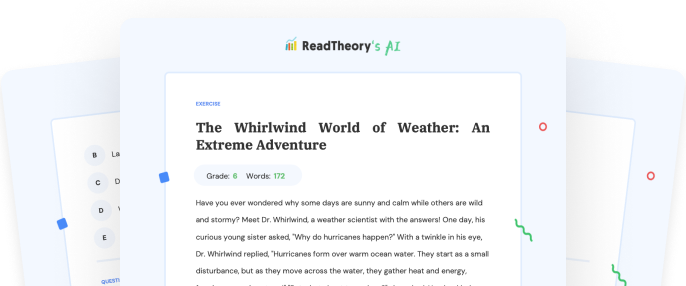Transform Your Teaching
with AI-Powered Worksheets
With ReadTheory’s Instant Worksheet Builder, you can create engaging, grade-appropriate worksheets tailored to your students in minutes. Spark curiosity, save time, and empower critical thinking with AI-powered tools designed for teachers like you.


The Bill of Rights: Foundation of American Freedoms
The Bill of Rights, ratified in 1791, forms the cornerstone of American democracy. These first ten amendments to the U.S. Constitution were introduced to safeguard citizens freedoms from government interference. The First Amendment guarantees five core freedoms: religion, speech, press, assembly, and petition. Its broad implications allow for religious diversity, open discourse, and peaceful protests. The infamous case of New York Times Co. v. United States (1971) exemplifies its power, where the Supreme Court upheld the right of the press to publish classified Pentagon Papers. The Second Amendment, a subject of ongoing debate, provides for the right to bear arms. It was initially conceived for militias to defend against tyranny, but today, it s often interpreted in the context of individual self-defense. The remaining amendments encompass protections against unreasonable searches (Fourth Amendment), rights to a fair trial (Sixth Amendment), and protections against cruel punishments (Eighth Amendment), among others. The Tenth Amendment reinforces the principle of federalism, reserving unspecified powers to the states or to the people. The Bill of Rights remains a shining beacon of American values, illuminating the path towards justice, equality, and liberty. Its timeless principles continue to shape the nation and the world, embodying the quintessential spirit of American democracy.
Question 1
What does the First Amendment to the U.S. Constitution guarantee?
Freedom of religion, speech, press, assembly, and petition
Right to bear arms
Protection against unreasonable searches
Rights to a fair trial
Protection against cruel punishments
Question 2
What does the Second Amendment to the U.S. Constitution provide for?
Rights to a fair trial
Protection against cruel punishments
Right to bear arms
Freedom of religion, speech, press, assembly, and petition
Protection against unreasonable searches
Question 3
What does the Fourth Amendment to the U.S. Constitution protect against?
Rights to a fair trial
Protection against cruel punishments
Freedom of religion, speech, press, assembly, and petition
Right to bear arms
Protection against unreasonable searches
Question 4
What does the Tenth Amendment to the U.S. Constitution reinforce?
Rights to a fair trial
Protection against cruel punishments
Freedom of religion, speech, press, assembly, and petition
Right to bear arms
The principle of federalism
Question 5
Which court case exemplifies the power of the First Amendment?
Roe v. Wade
Brown v. Board of Education
United States v. Nixon
New York Times Co. v. United States
Miranda v. Arizona
 or share via
or share via

Assign the ReadTheory pretest to determine students' reading levels.

Why Teachers Love
Instant Worksheet Builder?

Tailored Content for Every Student
Craft worksheets with passages and multiple-choice questions customized to your chosen topic and grade level, ensuring relevance and engagement.

Save Hours
of Prep Time
Our AI, Lexi, generates complete worksheets—passages, questions, and answers—in minutes, freeing you to focus on teaching, not planning.

Standards-Aligned Learning
Every worksheet is designed to boost reading comprehension and critical thinking, aligning seamlessly with State Standards to help your students shine.
Personalized teaching
for personalized learning
Browse worksheets created and refined by educators using Lexi—your source for inspiration and ready-to-use resources.


ReadTheory is free for Teachers to use.
Join thousands of educators using ReadTheory for free. Sign up today and start creating in just minutes!





